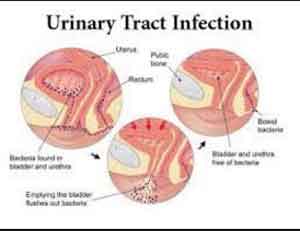- Home
- Editorial
- News
- Practice Guidelines
- Anesthesiology Guidelines
- Cancer Guidelines
- Cardiac Sciences Guidelines
- Critical Care Guidelines
- Dentistry Guidelines
- Dermatology Guidelines
- Diabetes and Endo Guidelines
- Diagnostics Guidelines
- ENT Guidelines
- Featured Practice Guidelines
- Gastroenterology Guidelines
- Geriatrics Guidelines
- Medicine Guidelines
- Nephrology Guidelines
- Neurosciences Guidelines
- Obs and Gynae Guidelines
- Ophthalmology Guidelines
- Orthopaedics Guidelines
- Paediatrics Guidelines
- Psychiatry Guidelines
- Pulmonology Guidelines
- Radiology Guidelines
- Surgery Guidelines
- Urology Guidelines
Check Procalcitonin Level to rule out UTI: Study

Level of Procalcitonin in the blood can be a deciding factor to determine the presence or absence of Urinary tract infection, thus impacting the physician's decision to prescribe antibiotics. A biomarker procalcitonin (PCT) threshold <0.25 ng/ml is a strong predictor of the absence of UTI according to a recent study published in the American Journal of Emergency Medicine. With the study the authors were seen concluding that the high negative predictive value of PCT may be useful as an adjunct to urinalysis results to rule out UTI and facilitate noninitiation or earlier discontinuation of empiric antibiotics.
A urinary tract infection (UTI) is an infection in any part of a urinary system like as kidneys, ureters, bladder and urethra. Most infections involve the lower urinary tract — the bladder and the urethra. Women are more prone to UTI Common symptoms include a strong persistent urge to urinate, burning sensation when urinating, passing frequent small amounts of urine, urine that appears cloudy etc.
Dr. Alexander R. Levine Et al. from the University of St. Joseph School of Pharmacy, in Hartford, Connecticut, and colleagues performed a single centre retrospective study of patients who presented to the Emergency Department in which a urinalysis test and a PCT level were obtained within the first 24 hour of presentation.
Signs and symptoms of UTI and urine cultures were reviewed to determine a positive diagnosis of UTI. The area under the receiver operating curve was used to calculate the test characteristics of PCT. Different breakpoints were analyzed to determine which PCT level corresponded to the highest sensitivity and specificity. A total 293 patients were analysed
It was finally concluded by the researchers that procalcitonin threshold level <0.25 ng/ml strongly predicted the absence of UTI and may be taken as a reference to discontinue the use of antibiotic at an early stage. The high negative predictive value of PCT may be useful as an adjunct to urinalysis results to rule out UTI and facilitate noninitiation or earlier discontinuation of empiric antibiotics.
To read the study in detail click on the following link:
The utility of initial Procalcitonin values to predict urinary tract infection Levine, Alexander R. et al.
The American Journal of Emergency Medicine, Volume 0, Issue 0 https://doi.org/10.1016/j.ajem.2018.03.001

Disclaimer: This site is primarily intended for healthcare professionals. Any content/information on this website does not replace the advice of medical and/or health professionals and should not be construed as medical/diagnostic advice/endorsement or prescription. Use of this site is subject to our terms of use, privacy policy, advertisement policy. © 2020 Minerva Medical Treatment Pvt Ltd